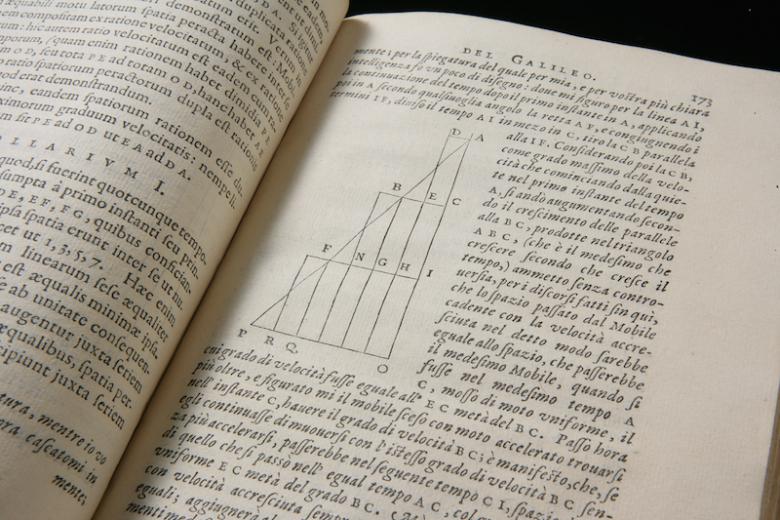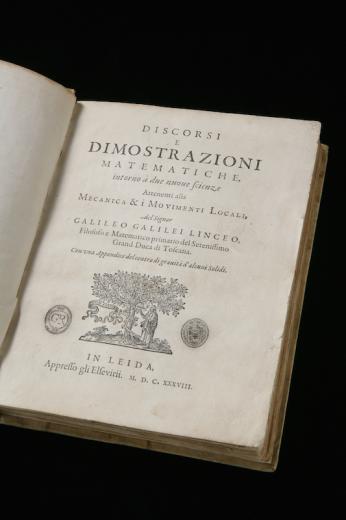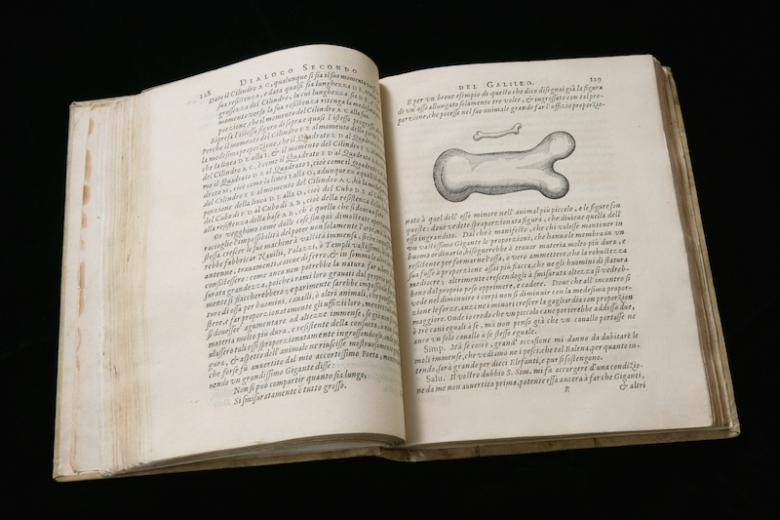Citation
Item Location
Under house arrest after his trial, Galileo turned his attention to a number of topics that had long interested him. This is his masterwork of physics, the last book of Galileo’s to be published in his lifetime. These two sciences concern tensile strength and motion. The science of motion includes the parabolic motion of projectiles and the law of falling bodies. Galileo’s science of tensile strength contains a critique of giant tales. He articulated what would become a central tenet of comparative anatomy: homologous structures of animals of different sizes will take on different shapes rather than just appear larger, because the force of weight scales in a non-linear fashion. When scaling up, one can’t just make things bigger. In other words, the bones of a giant will not look the same, except larger, as those of an ordinary human. They will need to be thicker. Eventually, a large enough giant would simply collapse under his own weight. Thus, giants as described in the tales of imaginative writers must be rejected by the principles of the new science of tensile strength.
Related Items
Resource Type: Book








